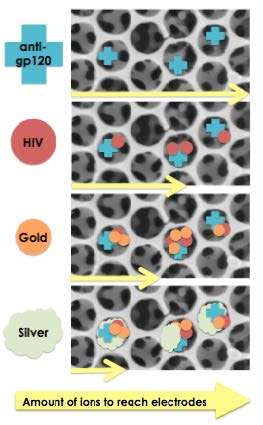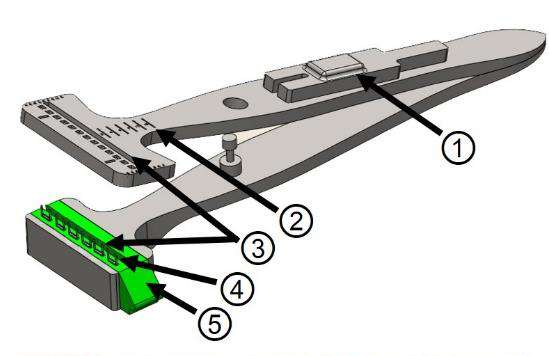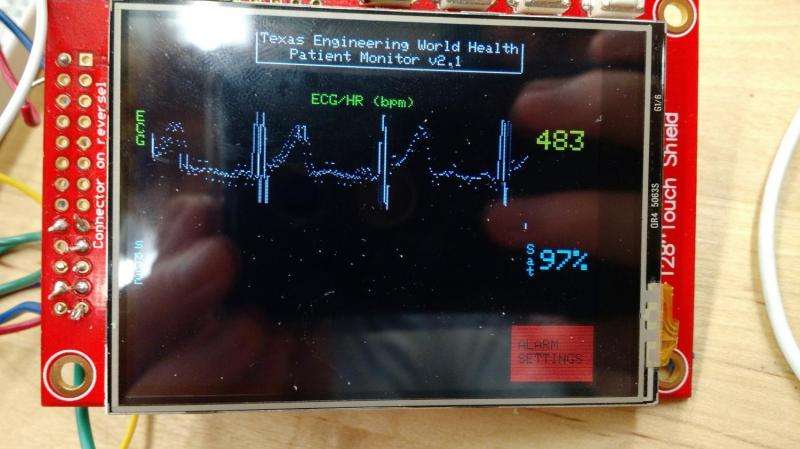Undergrad biomedical engineering teams win NIH's DEBUT Challenge

Three unique projects focused on improving global health won the National Institutes of Health's Design by Biomedical Undergraduate Teams (DEBUT) Challenge. The winners showed exemplary initiative in designing tools for a less expensive, portable device to monitor HIV treatment, a new surgical clamp to treat drooping eyelids, and a low-cost patient monitor. DEBUT is a biomedical engineering design competition for teams of undergraduate students, managed by the National Institute of Biomedical Imaging and Bioengineering (NIBIB), part of NIH. The judging was based on four criteria: the significance of the problem being addressed; the impact on clinical care; the innovation of the design; and the existence of a working prototype. The first place team will receive $20,000, second $15,000 and the third $10,000 in a ceremony at the annual Biomedical Engineering Society (BMES) conference in October.
The first place project, Viral Diagnostic Technology, addresses the need for a more accessible point-of-care viral load diagnostic device for HIV treatment monitoring. A majority of people living with HIV reside in resource-limited settings where traditional laboratory-based tests are not accessible. Current point-of-care technologies in the market or under development remain expensive and complex. The team of five students from Lehigh University in Bethlehem, Pennsylvania, has developed a system that meets the World Health Organization's minimum detection requirements while also delivering results in under an hour. In addition, it involves lower instrumentation and pre-test costs and is less complex than other currently available technologies available. This device can help determine if a patient's medications are having the desired effect of decreasing the amount of virus in the bloodstream. The design has the potential to increase accessibility to viral load testing globally.
Second place was awarded to the OculoStaple, a novel surgical clamp to replace current surgical techniques to treat drooping eyelids, or ptosis. The team of three from Georgia Institute of Technology, Atlanta, developed the OculoStaple clamp, which features custom designed bioabsorbable staples integrated into the clamp. Using a standard surgical scalpel to drive the stapling mechanism, the surgeon is able to quickly and safely resect the excess Müller's muscle, the muscle that raises the eyelid, while simultaneously sealing the incision with absorbable staples. The OculoStaple clamp transforms ptosis repair surgery into a rapid, office-based procedure, improves cosmetic outcomes, and establishes a safer surgical paradigm. The OculoStaples could potentially reduce operating time by 73 percent with an estimated cost savings of $4,000 to $6,000 per surgery.
The third place prize was awarded to FreePulse, a device that aims to provide a durable, reliable, and accessible patient monitor. Patient monitors are mechanical and electrical medical devices designed to continually monitor a patient's vital signs in order to identify respiratory or cardiac distress. The high cost of current patient monitors forces hospitals in low-income and developing areas to largely depend on outside donations for new devices, an infrequent and unreliable source of critical equipment. The team from the University of Texas at Austin developed FreePulse, a low-cost device to provide basic monitoring for heart rate, electrocardiogram signals, and percent saturated oxygen. Visual alerts are implemented to warn nurses if a patient begins to experience cardiac or respiratory distress, matching the capability of current market devices. A replaceable backup battery and uninterrupted power circuit ensures that the device continues to function even in unstable power conditions. While these features were included in the design so it would be functional in developing countries, they are also relevant in many low-income and rural areas as well.

"It is our hope that by focusing this competition on undergraduate students, we can encourage them to recognize their own talents and skills, and instill in them confidence to lead the next generation of innovators," said NIBIB's Zeynep Erim, Ph.D., who manages the DEBUT competition. "Many past winners of the DEBUT competition have gone on to patent their devices and some have even founded biomedical start-ups."
There were 59 eligible entries received from 30 universities in 18 different states.
"The next decades of biomedical engineering will produce incredible advances; and the students of today are the creators of tomorrow's transformative innovations," said NIBIB Director Roderic I. Pettigrew, Ph.D., M.D. "These students prove that they are capable of thinking about problems in new ways, generating more cost-effective and better technologies that will improve health globally."

Provided by National Institutes of Health